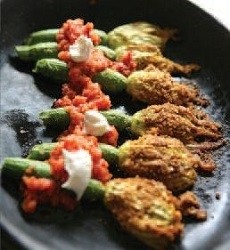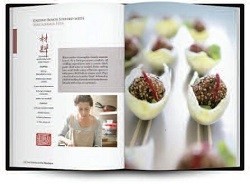Five Seasons in the Kitchen - Book Review
Five Seasons in the Kitchen: Zen-inspired Vegan Cooking
Cookbook by Avital Sebbag
Published by Avitality, Domain of Change, 2016. 211 pages.
NIS 85 in Israel; $24 on Amazon; free on Kindle at time of writing. Available through website www.avitality.co.il/english and also at Steimatzky, Café Louise chain, Pundak Smadar and Anastasia vegan restaurant.
Reviewed by Buzzy GordonIsraeli chefs are becoming renowned throughout the world for their cookbooks. Just last year, an Israeli cookbook won the highest U.S. accolade: Zahav: A World of Israeli Cooking, by Michael Solomonov and Steven Cook, was honored as the James Beard cookbook of the year for 2016. (Zahav is the name of Solomonov's acclaimed restaurant in Philadelphia.)
This achievement follows on the tremendous success of British-Israeli chef Yotam Ottolenghi's Jerusalem, which was the James Beard international cookbook of the year in 2013.
Of course, when it comes to cuisine, Israeli does not necessarily translate into kosher, or necessarily mean the recipes are healthy.
Fortunately, a new, handsomely designed cookbook covers both those bases – the word KOSHER appears on the cover – and is already winning accolades in its particular niche. Written by Avital Sebbag, a naturopath and nutritionist, Five Seasons in the Kitchen: Zen-inspired Vegan Cooking won Israel's national Gourmand Award in the vegan category, as well as a Canadian Indie award in the category of wellness cookbooks.
Five Seasons in the Kitchen contains 75 easy-to-follow recipes that are sugar-free, cholesterol-free and gluten-free. And yet, as a group of culinary journalists discovered at a seven-course brunch marking the official launch of the book, they also managed to be delicious.
The five seasons of Zen-inspired cuisine come from macrobiotic science, and reflect the five basic elements of Eastern philosophy: fire, earth, metal, water, and wood. Each of these elements has a corresponding season of the year, with particular attributes and foods. These seasons – demarcated by the annual solstices (summer and winter) and equinoxes (spring and autumn) – align roughly with the four seasons of the calendar, with the addition of "late summer," derived by dividing the summer in half.
The cookbook's recipes, grouped by season, to feature the fruits and vegetables that are at peak nutrition and flavor, comprise the full spectrum of what we eat and drink: beverages/smoothies, dips/spreads, salads, baked dishes (with and without flour), pastas, raw foods and desserts.
Among the creative dishes prepared by author Sebbag for journalists to savor were light and refreshing vegan spring rolls; endive boats stuffed with a delectable macadamia feta "falafel ball"; and zucchini flowers stuffed with a piquant mushroom filling.
It was hard to pick a favorite, but a consensus did emerge praising a zesty garlic-truffle spread, served with home-baked spelt sourdough bread. Unfortunately, the recipe for this spread will be published only in Sebbag's next book, so I prevailed upon her to divulge the recipe to me so that I may share it here as a bonus for ESRAmagazine readers.
Enjoy!
Garlic-Truffle Spread (makes 300 grams)
1 cup cashew nuts, soaked for two hours
4 cloves of garlic
1 teaspoon salt
1 tablespoon truffle oil
7 leaves of fresh basil
2 tablespoons olive oil
1 cup water
1 lemon
Combine the ingredients with fresh-squeezed juice from the lemon and process in a very powerful blender, like a Vitamix.










Comments